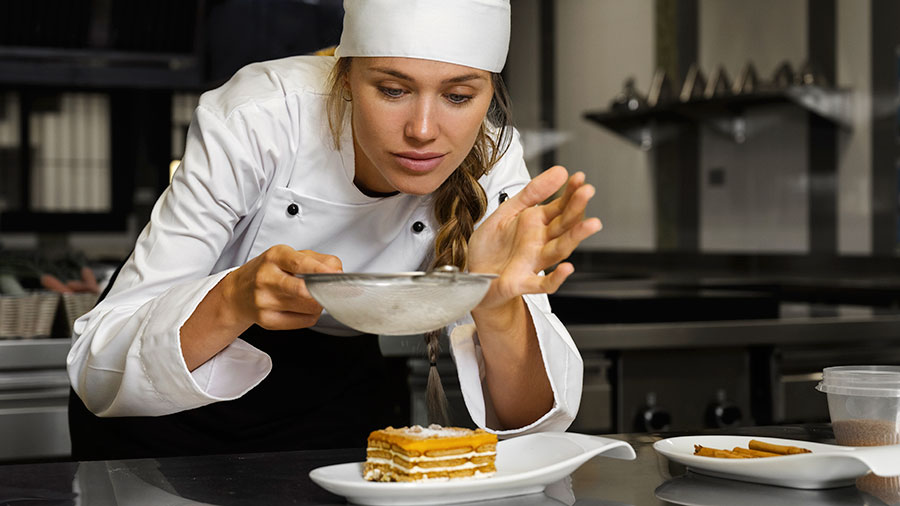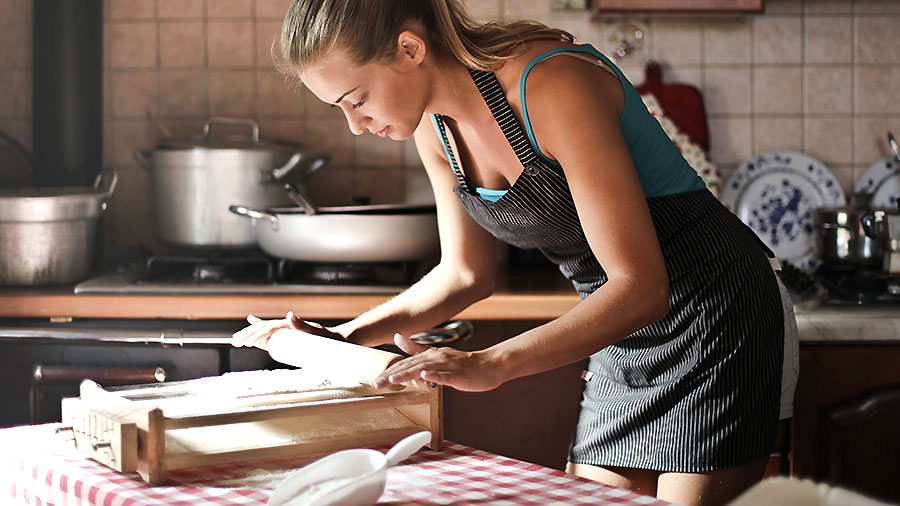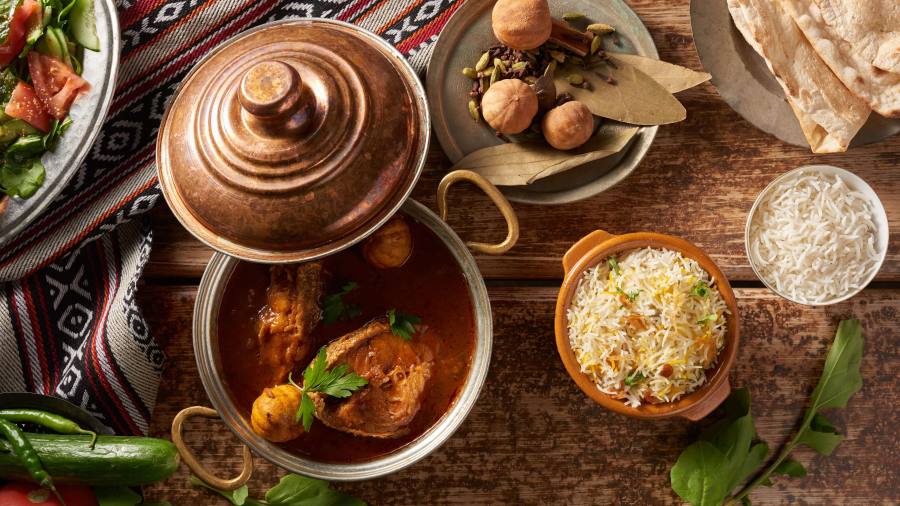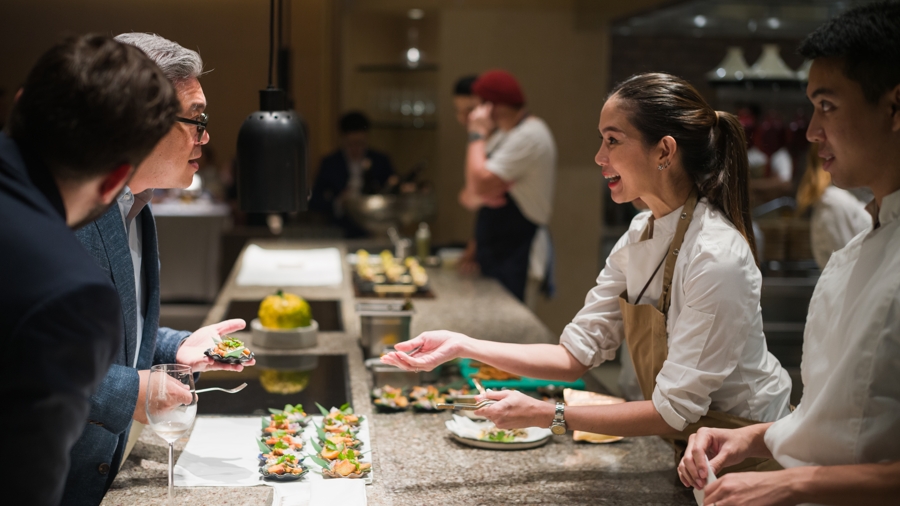Classic Chinese
Dumplings (Jiaozi)
Jiaozi, the cherished Chinese dumplings, is a culinary gem that marries simplicity with exquisite flavor. These petite parcels of delight are more than mere sustenance; they embody a cultural journey, symbolize unity, and offer a scrumptious way to commemorate life's precious moments.
For both seasoned culinary enthusiasts and curious novices, crafting jiaozi from scratch is a rewarding culinary adventure. While the process may appear intimidating initially, a bit of practice will soon have you fashioning these delectable morsels with confidence and flair.
Chef's Notes:
- Jiaozi are delightful Chinese dumplings that can be prepared through boiling, steaming, or pan-frying
- Homemade dumplings offer an unparalleled taste experience compared to store-bought alternatives
- Creating dumplings is an enjoyable social activity, ideal for family gatherings and festive occasions
The Art of Dumpling Making
Jiaozi transcends the realm of ordinary meals; they're a blank canvas awaiting your creative touch. The allure of these dumplings lies in their adaptability. From classic pork and chive combinations to vegetarian delights brimming with mushrooms and tofu, the filling possibilities are endless.
The wrapper, a simple fusion of flour and water, metamorphoses into a delicate sheath enveloping the filling. Once cooked, it achieves a tender yet slightly chewy consistency that perfectly complements the savory treasure within.
Ingredients for the Wrapper
- 2 cups all-purpose flour
- 3/4 cup warm water
- 1/4 teaspoon salt
Ingredients for the Filling
- 1 pound ground pork (or preferred protein/vegetables)
- 1 cup finely chopped Napa cabbage
- 2 tablespoons minced garlic chives (or regular chives)
- 1 tablespoon grated ginger
- 2 tablespoons soy sauce
- 1 tablespoon sesame oil
- 1/4 teaspoon white pepper
Making the Wrapper
1. Combine flour and salt in a spacious bowl.
2. Slowly incorporate warm water, stirring with chopsticks or a fork.
3. Knead the dough for approximately 5 minutes until smooth.
4. Cover with a damp cloth and rest for 30 minutes.
This resting phase is essential. It enables the gluten to relax, enhancing the dough's workability and producing a more delicate wrapper texture.
Preparing the Filling
1. Combine all filling ingredients in a bowl.
2. Stir in a single direction until thoroughly mixed and slightly tacky.
3. Cover and chill for 30 minutes to allow flavors to meld.
The unidirectional stirring technique promotes a unified texture in the filling. This seemingly minor step significantly impacts the final product's quality.
Assembling the Dumplings
1. Divide the dough into small portions and roll into circular shapes.
2. Place a spoonful of filling at the center of each wrapper.
3. Fold and pleat the edges to create a secure seal.
Don't fret if your initial dumplings appear slightly misshapen. With practice, you'll develop your unique folding style. Remember, even imperfectly shaped dumplings are delicious!
Cooking Methods
Boiling:
1. Bring a large pot of water to a rolling boil.
2. Add dumplings and stir gently to prevent sticking.
3. When water returns to a boil, add 1/2 cup cold water.
4. Repeat this process twice more. Dumplings are ready when they float to the surface.
Pan-frying:
1. Heat oil in a non-stick pan over medium heat.
2. Arrange dumplings in a single layer and cook until the bottoms turn golden.
3. Add 1/4 cup water, cover, and steam for 3-5 minutes.
4. Remove the lid and continue cooking until the water evaporates and the bottoms become crispy.
Steaming:
1. Line a steamer with cabbage leaves or parchment paper.
2. Arrange dumplings ensuring they don't touch.
3. Steam over boiling water for 6-8 minutes.
Dipping Sauce
A simple yet flavorful dipping sauce can enhance your jiaozi experience:
- 2 tablespoons soy sauce
- 1 tablespoon rice vinegar
- 1 teaspoon sesame oil
- Minced garlic or ginger to taste (optional)
Combine all ingredients in a small bowl. Adjust seasoning according to your taste preferences.
The Joy of Sharing
Dumpling-making is inherently a communal activity. Extend an invitation to friends or family to participate in the process. It's a wonderful opportunity to bond, converse, and create lasting memories while preparing a delicious meal.
In numerous Chinese households, dumpling-making is a cherished New Year's tradition. The shape of the dumplings resembles ancient Chinese gold ingots, symbolizing prosperity and good fortune for the coming year.
Freezing for Later
Don't hesitate to prepare a large batch. Uncooked dumplings freeze exceptionally well:
1. Arrange dumplings on a floured tray, ensuring they don't touch.
2. Freeze until solid, approximately 2 hours.
3. Transfer to a freezer bag and store for up to 3 months.
Cook frozen dumplings directly from the freezer, adding a few extra minutes to the cooking time.
Nutrition Facts (per serving, about 6 dumplings)
-
- Calories: 220
- Protein: 12g
- Fat: 9g
- Carbs: 24g
- Fiber: 1g
- Sodium: 400mg
FAQs
Can I make vegetarian jiaozi?
Certainly! Substitute the meat with a mixture of finely chopped mushrooms, tofu, and vegetables like carrots or spinach. The key is to ensure your filling isn't overly moist.
Why are my dumplings disintegrating during cooking?
This typically occurs when the edges aren't properly sealed. Ensure you moisten the wrapper edges and press firmly to create a secure seal.
Can I use store-bought wrappers?
Indeed, dumpling wrappers are available in most Asian grocery stores. While homemade wrappers offer superior texture, store-bought ones are a convenient time-saving option.
How can I tell when boiled dumplings are fully cooked?
Boiled dumplings are generally ready when they float to the surface and the wrappers become slightly translucent. This usually takes about 4-5 minutes.
What's the optimal method for reheating leftover dumplings?
For pan-fried dumplings, reheat in a skillet with a small amount of oil. For boiled or steamed dumplings, a quick steam or microwave works well. Avoid re-boiling as it can result in a soggy texture.





























 Gastronomy Cities
Gastronomy Cities
 Amazing Food
Amazing Food
 Chef's Talk
Chef's Talk